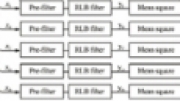Remain CALM: Achieving Audio Loudness Consistency in Broadcast
It's a common occurrence; the commercials always seem louder than whatever program we've turned the TV on for in the first place. It's annoying, intrusive and somebody ought to do something about it. Somebody has. The CALM Act (Commercial Advertisement Loudness Mitigation), which was passed by Congress in December 2010, describes in general terms that commercial content should not be any louder than the program material it accompanies. At the crux of the matter are the perceived differences in broadcast program material, specifically the way the sound of the commercials seems louder than the regularly scheduled programming. While this is nothing new, the greater dynamic range capabilities of DTV transmission have only magnified the problem.
There are many that hail the CALM Act, as witnessed by the speed at which the bill passed (and unanimously at that). To be sure, it is an international concern. Even before the passing of the CALM initiative in December 2010, broadcast-governing organizations worldwide had already been working to develop recommendations or recommendations for standards for the measuring, monitoring and correction of loudness in broadcast transmission.

In 2006 the International Telecommunications Union published ITU-R BS.1770, which recommended establishing an algorithm for the measurement of loudness and true peak levels. The Advanced Television Systems Committee, in November of 2009 put forth, ATSC A/85:2009 Recommended Practice: Techniques for Establishing and Maintaining Audio Loudness for Digital Television (which became the basis for the CALM Act) and the European Broadcasting Union released EBU – Recommendation R 128 Loudness normalization and permitted maximum level of audio signals, in August 2010. (Fig. ITU-R BS.1770 Block Diagram)
Since how we perceive loudness is subjective, and varies for person to person, how to measure loudness becomes the challenge as well as how to compensate for it. Both frequency and sound pressure level influence how humans perceive loudness as demonstrated by Fletcher and Munson in 1933. (Fig. Fletcher/Munson Equal Loudness Curves)
To facilitate making an objective measurement of a subjective perception, the original ITU-R BS.1770 algorithm filters the left, center, right and surround channels of multi-channel content independently (the Low Frequency Effects (LFE) channel is not filtered or included in the measurements) with a low frequency roll-off that is similar to the sensitivity of the human ear. A high frequency shelf filter is used to simulate the effects of head diffraction. The total response of the filters is described as "K" weighting. (Fig. K weighting filter)
The ATSC A/85 recommendation, which uses ITU-R BS.1770 as a basis prescribes that dialog or another anchor element, should be used to evaluate loudness. The assumption being that the viewer would establish a level for the dialog to be intelligible in their specific listening environment. Maintaining constant dialog loudness would maintain intelligibility. And again, using the ITU recommendation as the cornerstone, EBU R128 describes how to measure and normalize audio with loudness meters and specifies three additional parameters for measurement: Program Loudness, Loudness Range and True Peak Level.
The standard as set forth in the ITU-R BS.1770 recommendation has been getting traction throughout the broadcasting industry as a feasible solution. In the meantime manufacturers have been proactive as well by designing and building the tools that will be used to implement the new standards as mandated by the CALM Act. Achieving consistency in loudness through the entire workflow requires a comprehensive toolset. Loudness issues can manifest at any point within the signal chain, from content acquisition and creation, to broadcast and distribution. The rise of organizations using file-based content (that has been stored, repurposed for another application and played from file) provides the opportunity for offline test, measurement and loudness correction. And live broadcast situations require the ability to do real-time monitoring and correction.
The professional video industry's #1 source for news, trends and product and tech information. Sign up below.
There is still much to be done and resolved, and work is ongoing. The EBU will be holding a special loudness workshop on December 8-9 in Geneva, Switzerland. For additional information on the EBU Loudness Recommendation EBU R128 go to: http://tech.ebu.ch/loudness
And in London, England on December 16th, an international line up of speakers will be featured at the Loudness Summit, to be held at the Royal Institute of British Architects. Fore more information visit: www.theloudnesssummit.com.
Additional websites:
Advanced Television Systems Committee (ATSC)
www.atsc.org
International Telecommunications Union (ITU)
www.itu.int
